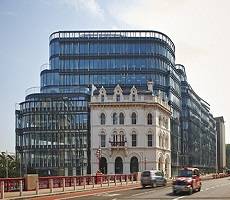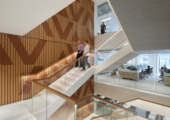July 14, 2014
The latest Workplace Insight newsletter is available to view online
 In the latest copy of the Workplace Insight newsletter available to view online; Chris Kane argues that people and place are a company’s most valuable assets and only by developing them both in tandem will you unlock their true value. We reveal that far from improving their work/life balance, flexible working means nearly half of managers work an extra day each week; the Dutch beat the Germans in workplace happiness and productivity levels, and the UK’s public sector spends almost twice as much on outsourced services as the country’s private sector. The BBC announces plans to move more staff out of its central London offices as part of its strategy to reduce property costs, and news of a transformation in the way the US corporate real estate market approaches the environmental performance of buildings. We also include a link to the new issue of Work&Place, the journal we publish in partnership with Occupiers Journal.
In the latest copy of the Workplace Insight newsletter available to view online; Chris Kane argues that people and place are a company’s most valuable assets and only by developing them both in tandem will you unlock their true value. We reveal that far from improving their work/life balance, flexible working means nearly half of managers work an extra day each week; the Dutch beat the Germans in workplace happiness and productivity levels, and the UK’s public sector spends almost twice as much on outsourced services as the country’s private sector. The BBC announces plans to move more staff out of its central London offices as part of its strategy to reduce property costs, and news of a transformation in the way the US corporate real estate market approaches the environmental performance of buildings. We also include a link to the new issue of Work&Place, the journal we publish in partnership with Occupiers Journal.

























June 27, 2014
Physical workplace should provide an environment in which people can thrive
by Bostjan Ljubic • Comment, Facilities management, Workplace, Workplace design
More →